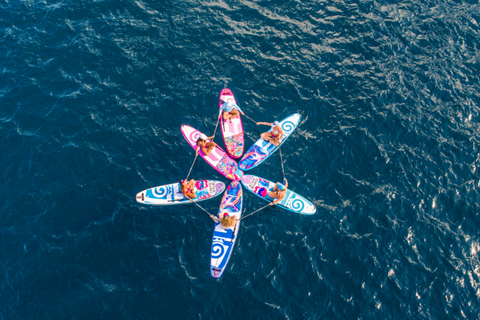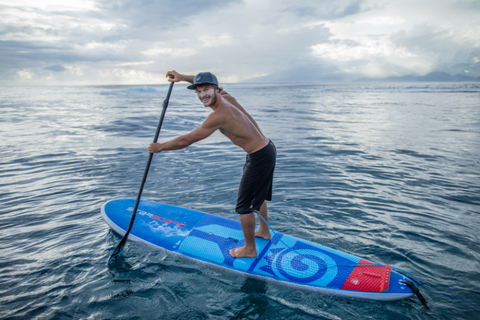How to get into paddleboarding quickly and easily
Paddleboarding is taking the world by storm, and for good reason
It’s conceptually simple, fun, and challenging while remaining accessible for people of all ages and levels of physical fitness. It’s a great way to exercise and to get outside into the sun, regardless of whether you’re only interested in a bit of casual paddling, or you want to get into racing or long-distance touring.
The most important draw for the sport is that it offers fun at every skill level, while also having a fairly gradual learning curve. All it takes is access to a body of water, a board, and a paddle. A beginner can learn to stand up and make basic manoeuvres on their first day, and improve steadily over time, giving paddleboarders an ongoing and satisfying sense of progress.

Getting equipment
The cost and the sheer variety of board-types available can be daunting for an absolute beginner. Paddleboards should be matched in size and volume to the height and weight of the person using it, and the shape of the board influences how well it will handle, how stable it will be, and how fast it will move.
The easiest and quickest way to get past this hurdle is to simply rent a board and paddle for your first paddle boarding experience. Because of the sport’s recent explosion in popularity, paddleboards can be rented almost anywhere, often with the offer of an introductory lesson. This can be very helpful not just in terms of getting some helpful pointers, but also to get a feel for what kind of board you prefer when you do decide to purchase your own.
Standing up on the board
Standing up on the board can be difficult at first, and may require multiple attempts. After climbing onto the board, you’ll be in a kneeling position, with hands pinned to the board in front of your knees. This will allow you to distribute your weight through your hands—to keep the board from flipping—as you lift each leg to place your feet down, approximately shoulder-width apart. Spreading your feet apart gives you more control over how your weight is distributed to either side, and lowers your centre of gravity. Maintain good posture, with knees slightly bent and a straight back for maximum stability.
Keep in mind that it’s completely normal for paddleboarders to occasionally fall off their boards. This is true for beginners who are still finding their balance, and more experienced boarders who like to challenge themselves on less-than-placid waters

Learning to paddle correctly
In most watersports, such as canoeing or kayaking, paddling with proper form is mostly an issue of efficiency. On a paddleboard, however, it’s also about stability. The paddle should be held with one hand on the grip at the end, and the other partway down the shaft, approximately so that your arms form a right angle. The blade of the paddle should be turned to angle slightly away from you.
Once on the water, most beginners will try to paddle using just their arms, since this initially feels easiest. However, this limits the amount of power you can bring to bear, while making you less stable. By engaging your core and rotating from your centre you can get keep your body rooted firmly on the board while gaining more control over the paddle.
Paddleboarding isn’t complicated in theory, but there is still a lot to learn. Once you’re on the board and moving, you’ll learn to fall safely, to get back onto the board, to manoeuvre comfortably and quickly, and to deal with waves, and that’s just the beginning. The beauty of the sport is that, while you can start having fun on your very first day, there is always room for improvement.

